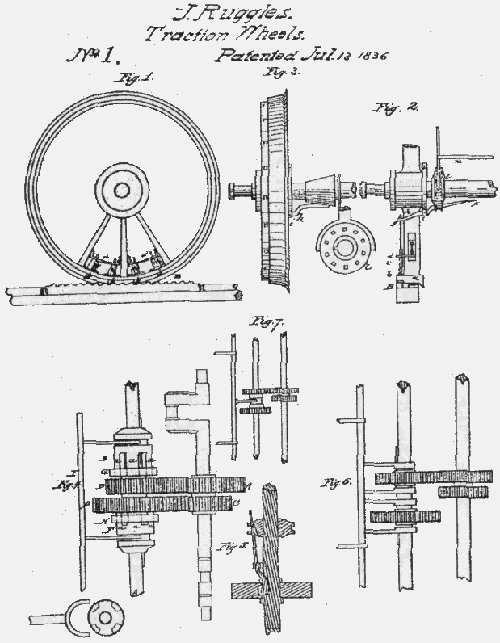The Lost Patents
Today, we lose ten thousand patents. The University of Houston presents this series about the machines that make our civilization run, and the people whose ingenuity created them.
U.S. patents are numbered sequentially, with a cumulative number approaching seven million by 2005. However, there's a curious catch here: Our patent office opened in 1790, and patent number 1 was is-sued 47 years later, in 1837. And therein hangs a tale.
When the British burned Washington in the War of 1812, the building that housed the Patent Office and General Post Office was the sole survivor. (That's where Congress had to meet during re-building.)
By 1836, it housed ten thousand patents and seven thousand pat-ent models. That's when the government authorized a new Patent Of-fice. Just then, as if on cue, a fire destroyed the old building, and all the patents in it. Only after that, did we begin numbering patents. Patent Number 1 was issued to John Ruggles for a new rail-road wheel, meant to gain better traction.
The Office managed to reconstruct only two thousand of the lost patents. For those, they began a separate series X-1, X-2, and so forth. We call them the X-patents. After about ten years, the Office pretty much gave up on the remaining eight thousand and wrote them off as an irretrievable loss of our national legacy.
However, New York Times writer Sabra Chartrand, describes the still-ongoing process of patent archaeology. Some eight hundred more of those early patents have since been restored, and the work goes on. Bit by bit, the record has been reconstructed, ever since the Patent Office gave up. And the task has been done by the most effec-tive work force in the world -- by dedicated amateurs.
The trigger for the Times article was one recent discovery in particular. Fourteen old patents turned up in the library of Dart-mouth College. A very significant inventor, Samuel Morey, had donated ten of them. One of Morey's patents from that period was al-ready well known, at least in his native New Hampshire. Filed in 1826, it described a gas-driven internal combustion engine -- long before the Otto Cycle and gasoline.
Much earlier, Morey had not only patented, but actually built, a steamboat. He tried to sell it to the financier who ultimately backed Robert Fulton. He actually took the fellow for a ride on it. But they couldn't come to terms. When Fulton finally filed his own patent, he focused on the paddle wheels. That was a part of Morey's boat that he'd taken for granted, without bothering to mention it in his patent. And the rest, as we say, is history.
These old patents, and Morey in particular, awaken us to a fea-ture of the X-patents. They were written when American invention was still very young. Today, we have seven hundred times as many patents as we did in 1836.
But those missing patents, written upon an almost clean slate, surely include more nuggets of surprise -- more treasures like pre-Fulton steamboats and pre-Otto IC engines. We can only wonder how much of that has been duplicated during the long years since.
I'm John Lienhard, at the University of Houston, where we're interested in the way inventive minds work.
S. Chartrand, Patents. New York Times, Monday August 9, 2004, pg. C2.
A. Sutcliffe, Steam: The Untold Story of America's First Great Invention. New York: Palgrave Macmillan, 2004.
For more on Samuel Morey, see: kinnexions.com/smlsource/samuel.htm
Two codicils here: People doing the "patent archaeology" are amateurs only in the sense they are not working for pay. Many work as patent attorneys. And the financier behind Fulton was Robert Livingston.
